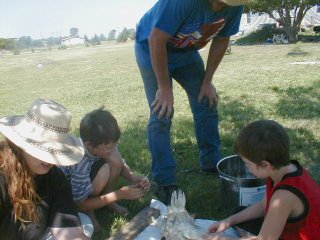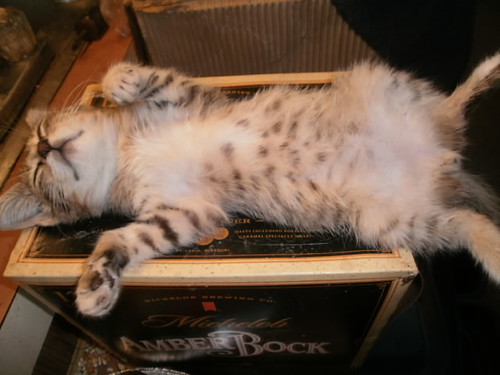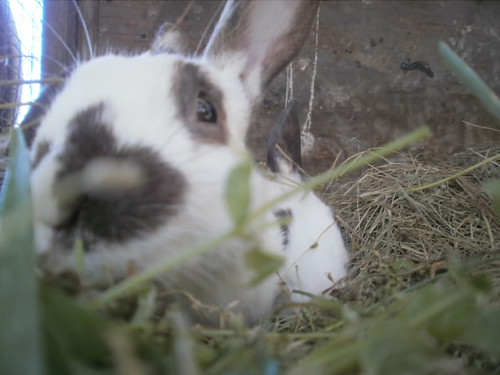Since tomorrow is the fourth of July I decided to go ahead and post today about what happened on the homestead. . . today. Just a fair warning to you, this post is about butchering a domestic duck. I have changed so much over the years. I was a strict vegan for many, many years, and now I am raising livestock for my own consumption.
We decided that it would be to our advantage to prepare more so this time around. We didn't want to repeat the mistakes that occurred with the roosters. My husband went outside and sharpened s "
whacking" knife, while I boiled the water. We are far from being fully prepared though. There are some things that we just can't make and must buy, and that takes time.
Remembering the problems from the past, I set about looking through my books, trying to find the best way to kill a duck. "
Chop off it's head" ok, I guess that is the best way. But what of the moving, the thing that caused my husband to break a roosters wing? I found a small passage in one large book that mentions placing two nails into the chopping block and 1 inch apart, leaving some of the nail exposed. I immediately ran outside to tell my husband of this gem of information.

We lucked out today, our nephew was over and he was more than thrilled to be allowed to help. My husband and him went into the chicken coop to catch them a duck. The fishing net was something we saw another chicken wrangler using. He seemed to have a much easier time catching the illusive birds with it, so we decided t employ this idea. As you can see, it worked. And my husband didn't have to chase the Pekings about the yard.
The nails in the chopping block, worked wonderfully. And we were able to do both the ducks with little problems. Though my nephew discovered that ducks are much more active in the throes of death than other birds he was use to hunting. Soon we had two ducks hanging from the tree, allowing them to bleed out.
I have looked in books and on the internet, trying to find out if anyone can tell me how long to allow a bird to bleed before scalding. I have found nothing, no mention to this little bit of info. I assumed that you allowed it to hang until the blood stops dripping. Not so {
or is it?} for when I scald the bird, blood will pour out of it. So far that doesn't seem to be a problem, just a mess.

We scalded the ducks for almost a minute. There seems to be a discrepancy from informants about how long one needs to scald a duck. We decided to find a happy medium. {
20 quart pot is still not big enough} The water was just a tad too hot to be pleasant as it sloshed up on my hands {
can you say second degree burns? I can}
We pulled the tail and wing feathers out first. Then saved the down to wash and dry then use for a pillow. {
a small, but comfy pillow} My family soon left me to do this chore. I am not sure how long it took me to clean them, but I can assure you that it took longer than the roosters.
Unfortunately we started this in the early morning and I was soon covered in flies. I did my best to get all the feathers removed. Then shoving the birds into a garbage bag, I ran into the house to finish the job. {
I have looked up floor plans for a cleaning room, and have informed my husband that I want one for my birthday if he thinks I am going to continue doing these things}

With the duck in the sink, I made an attempt to remove the pin feathers. This is not an easy job. With my intense impatience I grabbed the duct tape {
or would that be duck tape?} and placed it on the duck. It didn't worked. I had really hoped that I might have stumbled upon something. My disappointment reverberated against the kitchen walls. And I went back to plucking by hand, cursing, and mumbling about the things I want for Christmas that would make my life easier {
like moving back to the suburbs}
I had to have my husband consult the books about the oil gland. It's in the tail, and that's all I was sure of. None of the books said how big it was or that it isn't just this little slick feathered knob at the tails tip. {
I am starting to wonder why I even have these books} I found out that there is more to the gland just under the thick {
and I do mean thick} skin. I am not a person known for her patience, and ended up cutting blindly at the tail, removing it as a whole. I lucked out and didn't cut into the gland. That wouldn't have been fun to clean up.
Next came the disemboweling. I still have clear fond memories of the roosters, and I feared for my nose. I braved myself up, knowing full well it had to be done, and that someday this will be second nature. I wasn't about to cut around the vent as the books stated before. I went wider out, away from it. Everything stayed in tact. This thing about simply pulling on the intestines itself and that it will just slide out is pure myth.
Don't believe it! It is a lie, something that the old timers have made up just for their own enjoyment. {
of course this is purely my opinion. And if I was an old timer I would have a perverse joy about telling someone how to do something incorrectly just to watch them cover themselves in bird manure. They do call it the simple life.} I worked around it, detaching the membrane that kept it in place, and was able to slide the intestines out without any problems.
After gutting and degibletizing {
my word, but you may use it} I went for it's neck. It was much tougher to get through then the roosters was. My husband ended up cutting through it while he made fun of me and my weakling status. The trachea was then removed and has been set out to dry. My husband {
the wonderful man that he is} has decided that he wants to see if someone was to blow through it, would it make the quacking noise. I will let you know if it works later.

The duck was then washed and pat dry. We wrapped it and placed it in the freezer. We plan on eating roast duck sometime this week.
My father is still here visiting, he decided to sit this little adventure out,
the city boy!


















